Jazz Piano Improvisation: The 12 Step Method
 Ready to improve your jazz improvisation skills for the piano? This step by step article will help.
Ready to improve your jazz improvisation skills for the piano? This step by step article will help.
Jazz is such an amazing art form.
Unlike classical music where the notes are the same each time, in jazz, each performance of a tune is unique to the performer doing it!
At the highest levels each time you play a tune it takes on a life of its own and becomes an incredible vehicle for self expression. Improvisation and great jazz performance are truly one and the same. You don’t have one without the other.
This is why every aspiring jazz musician needs to learn how to improvise jazz on the piano.
To get a head start, check out this improvisation shapes lesson with Steve. Then, scroll down grab every detail from this entire powerful article.
Jazz Improvisation Shapes Video
Look, I know this can be challenging, but with the right direction anyone can learn how to be a great improviser. Let’s look at the 12-step method of learning jazz improvisation. These 12 steps are influenced by decades of wisdom from the greatest jazz piano legends.
Step 1: How To Build Superior Listening Skills For Jazz
We say that music is a language and jazz is one of the most important dialects of that language.
Just as with every other language, we learn how to use it by listening first.
You first learn how to speak by listening to how your parents and every person around you would. It’s the same thing with learning jazz improvisation. The first step to becoming a better jazz improviser on the piano is to listen to the best jazz musicians.
How Chick & Herbie Inspired An Improvisation Virtuoso
In fact, virtuosic jazz improviser David Garfield swears by this method. David is the musical director for jazz legend George Benson and has gigged with Freddie Hubbard, Natalie Cole, David Sanborn, Eddie Van Halen, Manhattan Transfer, Boz Scaggs, etc. Other musicians, including me, really respect his talent.
Plus, he’s good friend of Horace Silver. His resume in modern music is a mile long. So, when a guy with incredible improvisation skills swears by the method you have to pay attention!
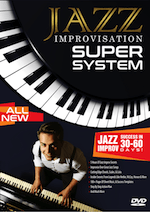 David talks about who he learned from and specific music elements he picked up from legends like Herbie Hancock, Horace Silver, and Cedar Walton.
David talks about who he learned from and specific music elements he picked up from legends like Herbie Hancock, Horace Silver, and Cedar Walton.
In Chapters 42-45 of The Jazz Improvisation Super System David demonstrated the specific musical discoveries he made from Chick, Herbie, Cedar, and McCoy Tyner too.
The First Step Of Learning Is By Listening
Our brains ignore more than 90% of what our senses perceive. It’s designed that way. Otherwise, we’d go into sensory overload that we’ll get too distracted to do anything.
And so, casually listening like you would inside an elevator playing background music won’t help you learn how to improvise jazz. You have to actively listen to the music.
How Do Jazz Musicians Actively Listen?
Go ahead and play any recording by your favorite jazz artist. If you don’t know where to start, check out 5 recommended jazz recordings to make you a better musician to give you an idea of what to look for in recordings.
Listening for the Most Important Elements Of Jazz
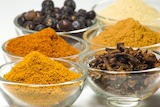 Great musicians listen and interpret music differently than newbies. They are able to digest the most important elements of a piece of music and filter out the less critical elements. So, how do you do that?
Great musicians listen and interpret music differently than newbies. They are able to digest the most important elements of a piece of music and filter out the less critical elements. So, how do you do that?
Here is a list of starter elements that you can begin to listen to when first start listening to jazz recordings.
Groove, Feel, And Rhythms – Get some advice from this great jazz rhythm lesson by Steve.
Melody – This is either the first or second thing that will be most obvious when you listen to the music. What’s the overall shape of the melody? Does it go up and down? Do you notice various melodic patterns or note sequences. In jazz we use special melodic patterns and often times use extensions of chords.
Harmony – We’re talking mostly about the chords that accompany the melody. It can also be harmonies that go with the melody. For instance, let’s say you’re listening to Miles Davis’s recording of “So What”.
Listen to how both Miles Davis and John Coltrane play the melody together. Try and figure out if the trumpet is playing the melody or if the sax is playing the harmony that goes with it. Also listen for the chords of the piano.
Every genre has specific voicings and ways chords are built. Jazz is particular and it’s essential that as you build your improvisation skills you learn chords that support your right hand melodies.
(Keep in mind that even if you’re trying to build your jazz piano improvisation skills, you still can learn from listening to all kinds of different instruments).
Dynamics – When do they play quiet? Loud? What sort of expressive elements does each musician bring to make the music sound alive? How does the soloist articulate particular notes?
The Form – Is it a 12-bar blues? Does it have a kind of ABAC form? Verse-Chorus-Verse? AABA? Is it a 16 bar tune or a 32 bar tune?
In jazz, we’re usually improvising over the form and chord changes to a song so it’s critical that you learn how to play over each element of a form. You’ve got to know where you are in the form at all times.
Texture And Timbre – Which instrument is playing the melody? Are they playing in counterpoint? Is it just one instrument playing the melody or is are another? Does it sound thick?
There are many more elements but ultimately it’s good to understand that active listening is the beginning of this art form.
 Another important thing about listening is that it is very important that you listen to great jazz every day.
Another important thing about listening is that it is very important that you listen to great jazz every day.
Not only is this fun but it will be a great way to assimilate yourself to the many sounds that make up this style of music.
In the same manner that we learn how to talk, you have to be immersed in jazz every day to learn how to speak it.
(Here’s a really cool lesson on how to listen to and learn jazz. Check out Steve’s how to play jazz lesson.)
Now, that you understand some elements to hone in on when you listen, let’s talk about how to begin incorporating some of those elements into your own playing.
Step 2: Imitating What You Hear on The Piano
 Just like a baby elephant imitates its mom, the next step is to try and imitate little elements of what you hear from recordings.
Just like a baby elephant imitates its mom, the next step is to try and imitate little elements of what you hear from recordings.
That’s because modeling the little musical phrases of the masters is a great way to learn how to build your own ideas.
In fact, this is a proven way to learn how to improvise on piano.
Start small at first and listen to a couple of bars from a recording. Say you want to do a certain phrase from a solo that you thought sounds cool, try and do that on your instrument.
Guess what. You have just made the first step towards transcribing music! But more about that in a later section.
 At first, it is most likely that you’ll make mistakes, but that is okay. When we were started out learning how to speak we didn’t do it perfectly. Eventually, the more we talked the better we got at it!
At first, it is most likely that you’ll make mistakes, but that is okay. When we were started out learning how to speak we didn’t do it perfectly. Eventually, the more we talked the better we got at it!
When trying this out, start small. It can be as little as one note at first. Try and nail that first note first. Then play the first note and try out the next note.
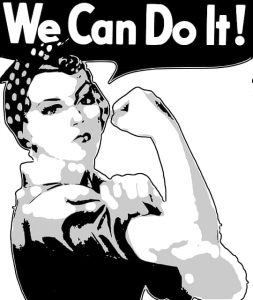 Keep on repeating this process until you can play that phrase. Small wins can lead to big ones as you build it. As they say, Rome wasn’t built in a day.
Keep on repeating this process until you can play that phrase. Small wins can lead to big ones as you build it. As they say, Rome wasn’t built in a day.
But, once you nail that first phrase you want to try to understand what makes it tick.
Then, from there you can build small little variations on it. This is super fun to do by the way!
If you want to learn more about how to take 1 lick or scale and turn it into an endless stream of improvisation ideas check out this cool jazz improvisation program.
Ok, now that you understand a couple of the basics lets talk about some more specific musical devices that you’ll see in lots of great performances.
Step 3: How to Use Your Jazz Scales Properly
First, let’s get one misconception out of the way. Scales are NOT the philosopher’s stone of jazz improv. They are not the secret sauce that makes jazz solos so hot.
Now why do you need to study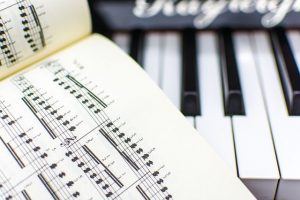 scales? Scales are your musical ABCs or building blocks in the world of jazz piano and music in general.
scales? Scales are your musical ABCs or building blocks in the world of jazz piano and music in general.
They are tools that will give you fundamental technique.
As you might already know, scales are a particular sequence of notes starting from a note we’ll call “root” then going up in pitch until it repeats itself a register higher or lower.
We all start first with learning the major scale. This is the scale that many others would recognize as Do-Re-Mi-Fa-So-La-Ti-Do.
Now, why start with a major scale? Because this is the scale from which most other music theory concepts are derived such as intervals, chords, and key signatures.
Start learning about major scales with this lesson on major chord scales.
The Major Scale Is the Parent Scale
The major scale is like a road towards other scales. You can derive other scales from the major scale by simply playing that same major scale but starting on a different note. This is what we call the modes. For a given major scale, we can get seven different modes:
- Ionian – The major scale starting at the root.
- Dorian – 2nd
- Phrygian – 3rd
- Lydian mode – 4th
- Mixolydian – 5th
- Aeolian – 6th. This scale is the same as your relative minor scale. Matter of fact is you can use this a lot in jazz, so check out Steve’s lesson on minor jazz scales.
- Locrian – 7th
 So let’s say, you want to know where D Dorian is. You have to ask yourself, “What major scale would have D in its second position?
So let’s say, you want to know where D Dorian is. You have to ask yourself, “What major scale would have D in its second position?
The answer is C major. So, to get D Dorian, you only need to know your C major scale and start it at D.
Each of these modes have either a major, dominant, or minor quality. Generally speaking, you would use the following:
- Ionian and Lydian for major chords.
- Dorian, Phrygian, and Aeolian for minor chords.
- Mixolydian for dominant 7th chords.
- Locrian for minor 7th(b5) chords.
And you can also play cool groupings of each of these scales also. For example, there are 5 note scales that sound amazing that you can build from all these scale. They’re called pentatonics.
To get you started improvising with all the different scales you need to know check out David’s video course on great jazz improv right here.
Jazz Improv Video Over A Shorter Song
How to Practice Jazz Scales
 While you may practice your scales initially by playing them in a sequential fashion, it is best practice the scales in a nonlinear way.
While you may practice your scales initially by playing them in a sequential fashion, it is best practice the scales in a nonlinear way.
By this we mean practicing the scales by playing random notes of the scale at first. Here we try our best to find or improvise some little melodies.
After trying to get used to nonlinear practice with random scale notes, you can make use of note patterns and sequences.
We’ll talk about these more in a later section, but you can go right ahead and discover Steve’s 3 uncommon tips for practicing jazz piano technique. In there, you will find some excellent scale practice tips suited for jazz.
There are more scales that you can use for different chords other than what I’ve mentioned. Every scale you learn has a different flavor so to speak. To learn more about these scales, check out the Ultimate Jazz Scales Book.
Step 4: Work On Jazz Chord Theory & Intervallic Relationships
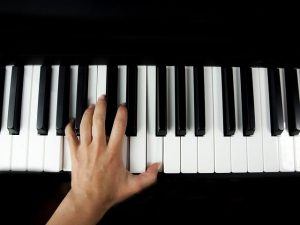 Almost every melody ever conceived would focus around certain notes at certain times or sections of a song. To properly do improv, you need to be able to identify and target these notes that are called chord tones.
Almost every melody ever conceived would focus around certain notes at certain times or sections of a song. To properly do improv, you need to be able to identify and target these notes that are called chord tones.
To learn about these notes, you need to study how chords are formed, so you have to learn jazz chord theory.
Start out by learning about the basic triads (major, minor, augmented, diminished), the seventh chords, and then work your way into extensions.
By the way, if you’re brand new to jazz and want a step by step method for going from zero to playing songs you love in 30-60 days then check out The Zero To Jazz Piano Hero course.
This is by far are most effective and popular program for new jazz musicians who want to learn the fundamentals so they can just sit down and play jazz songs.
Whenever you improvise, you will try your best to emphasize these chord tones so that your lines are going to sound stellar. These will also give your listeners a good sense of familiarity. It’s also going to help you gel your improvised lines with the tune you are playing.
These are important elements of improvisation jazz.
The Value of Intervals
 Also take note of different intervals starting from the unison up to the octave. For every scale or chord you encounter, you will discover that the intervallic relationships between each note of a scale and a chord will determine its character.
Also take note of different intervals starting from the unison up to the octave. For every scale or chord you encounter, you will discover that the intervallic relationships between each note of a scale and a chord will determine its character.
By carefully using these intervals in improvising solos, you can get different effects that would make your improvisation more exciting.
For more information on learning jazz chords, check out this lesson on dominant jazz piano chords. And if you’d like your chords to sound hip, go to my lesson on quartal harmony.
Step 5: Learn Common Chord Progressions
To map out every song you want to learn and play, you need to get a handle on jazz piano chord progressions.
The 2 – 5 – 1 chord progression is the most common one in jazz, and so it is very important to learn. In a major key, it is usually a ii7 – V7 – Imaj7. In a minor key, it will be a ii7(b5) – V7 – i7.
Take a look at this awesome jazz theory lesson that looks into the ii – V – I.
For minor keys, you’re going to want to check out this nice ii – V – I jazz lick in minor lesson to see how melodic lines relate to a chord progression.
You also want to get comfortable with blues chord progressions, the 1-6-2-5-1, Coltrane chord changes, rhythm changes, modal chord progressions, and many of the standard circle of fifth based motions you’ll find in the most common jazz tunes.
Why You Should Learn Your Chord Progressions
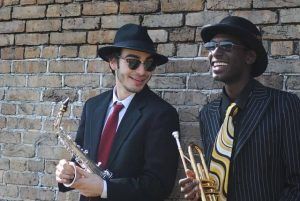 Now, why would you want to know your chord progression? Knowing a chord progression in and out helps you learn your tunes faster.
Now, why would you want to know your chord progression? Knowing a chord progression in and out helps you learn your tunes faster.
In turn, this knowledge would help you map out the course of your improvisation.
Knowing when each chord is going to turn up will allow you to anticipate what’s coming next and will help you play the best notes over each chord change.
It’s also very important that you know how to play a chord progression in every key.
To shorten the time learning all of these, Steve has this really cool 2-5-1 theory cheat sheet that you can check out.
Step 6: Get Your Arpeggios Up to Shape

If you want to create more awesome sounding lines on the fly, you need to work on your arpeggios.
Arpeggios are just playing 1 note at a time from individual block chords.
Instead of playing your chords like a block of sound, you play one chord tone at a time in certain sequences.
When practicing arpeggios, you need to practice them in both linear and nonlinear ways (the same approach as you would do for scales). Nonlinear practice of arpeggios also would give way to more interesting pattern.
How to Work On Arpeggios
Work on arpeggiating every chord you have ever learned. You can start out by playing each chord you know as arpeggios in every inversion. Afterwards, you can extend those arpeggios by playing them in two or more octaves.
For more applications of arpeggios in jazz improvisation, check out this amazing lesson on John Coltrane Patterns.
Step 7: Understand What You’re Trying To Do with Music Theory
Why do some things sound awesome? Why do certain aspects of music go well together? How does music work? These are the sorts of questions you will ask when you wonder about piano improvisation. Music theory provides us with answers to that.
Knowledge of music theory goes far when it comes to improvising. For example, one of the most common ways to spice up any tune is through chord substitutions or reharmonization. You simply cannot replace any chord for one particular chord. The substitute chord should be able to function in the same way as the original chord.
A Sample of Music Theory Application
Let’s say you have a ii – V – I turnaround in the key of C, and that would be Dm7 – G7 – Cmaj7:

It should be fine playing this in the first section of your tune, but let’s say you want to add more tension the second time around. You can replace the V chord with a bII7 chord instead. This way, you now have a Dm7 – Db7 – Cmaj7:

You can also have something like a Dm7 – Db7 – C6/9 as another option:

Your melody may also influence your choice of chord substitutions. You can only grasp those things completely if you understand music theory.
Where to Learn Music Theory
To get you started on that, check out this jazz theory lesson by Steve. You can also work more on reharmonization through Steve’s revelation of his favorite jazz piano chord and reharmonization tricks.
Step 8: Work On Some More Ear Training
Jazz is a largely aural tradition. As discussed earlier, most of what we learn from jazz is from actively listening to tunes. This is especially true when it comes to piano jazz improvisation.
To better appreciate those tunes and be able to learn faster, you need more ear training.
Ear training will involve things such as:
- Learning how intervals sound.
- Identifying pitches that you hear based on a reference note.
- Identifying chord quality.
- Singing phrases and melodies that you hea.
- Correctly reproducing rhythmic patterns.
By being able to identify such nuances in the tune you are trying to learn, you get to learn music faster.
Ear Training Exercises
Since jazz relies heavily on chordal theory, get your ears in shape with 2 ear training exercises to hear a chord progression more easily.
More importantly, most of what jazz improv entails is accurately reproducing whatever music that you hear inside your head. Consistent ear training will definitely help reach that goal. Since jazz chords have these extra extensions tagged on to them most of the time, get some more training with our 5 jazz ear training tips for hearing the extensions of a chord.
More Ear Training Tips
For more information on turbocharging your ears, we have this really cool Ear Training lesson by Doron Orenstein. For more in-depth training, you can go and check out this lesson called Ear Training: 4 Guaranteed Ways to Turbo-Charge Your Ears.
Step 9: Learn Jazz Standards
 If there’s one way of putting piano improvisation training in one small package, it’s none other than learning jazz standards.
If there’s one way of putting piano improvisation training in one small package, it’s none other than learning jazz standards.
Early on in this piece, I was talking about starting to learn jazz by listening to the greatest musicians. As always, go and listen to their recordings. It’s an important key to learning jazz.
Nowadays, searching for jazz standards is easy. You can go to Spotify or YouTube for recordings of tunes by Dexter Gordon, Clarke Terry, Thelonious Monk, etc.
Working On Jazz Standards
The next task is, again, to put your ears to work. For example, listen to “Misty” as played by Stan Getz then try to learn the tune by singing or humming it. Listen to it repeatedly to the point that you are able to remember it, internalize it, and then be able to sing or hum it the way it was played in the record.
In such an exercise, learning a tune this way allows you to map out a tune in your mind and be able to grasp the sort of vocabulary a jazz legend would use over the tune.
To get you started on which jazz standards you should learn first, go to Steve’s lesson about Jazz Standards You Should Learn.
Step 10: Transcribe Music and Practice Your Transcriptions
 If you’ve listened to a tune like “Misty”, you probably know that it has been covered by a lot of jazz masters. Without a doubt, each one of them has his or her own spin on it.
If you’ve listened to a tune like “Misty”, you probably know that it has been covered by a lot of jazz masters. Without a doubt, each one of them has his or her own spin on it.
Errol Garner would play his composition “Misty” in the way that he conceived it, but Chick Corea would take it to a different direction. They both would play the same melody and chord progressions.
But they might take it to different directions with unique rhythms, improv lines, jazz chord voicings, and licks.
These are the kind of nuances you want to capture if you want to get your jazz improvisation vocabulary to that high level, and transcription is the best way to do that.
How to Start Transcribing
As we said earlier, transcription starts out with trying to accurately capture note by note the exact performance of tune by a particular artist whom you would like to learn from.
We first do that WITHOUT writing it down on paper. In fact, some jazz musicians wouldn’t even write it down. It’s all just burnt into memory.
After that, try putting it on sheet music. There is an advantage to writing it down on manuscript paper or a notation program.
You can always refer to the sheet music transcription for studying. Eventually you would have to try your best to memorize it, or at least be able to practice it correctly and consistently. The sheet music makes it a bit too easy for some jazz students.
Why You Should Transcribe Music This Way
Practicing transcription like this helps you gain “muscle memory” or jazz vocabulary that you can instantly pull out when you need it for improvisation.
From these transcriptions, you will be able to pull out tried and tested licks. These licks form important vocabulary. Find some of your favorite songs, transcribe solos, and practice improvising at your own pace. This is a killer way to start building your jazz improv muscles and play beautiful music before you know it.
More Things To Do With Transcription for Learning Jazz Improvisation
Check if you can pick out particular licks and what chord progression they were used in. Since you’re studying improvisation, it’s perfectly fine to play your transcription exactly as how it was performed by your favorite artist.
In fact, this is a critical element of learning jazz music. Studying and modeling your favorite artists is recommended.
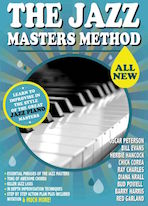 One of the best ways to check out the style and technique of jazz giants is through Steve’s Jazz Masters Method.
One of the best ways to check out the style and technique of jazz giants is through Steve’s Jazz Masters Method.
In that program he teaches you the secrets of 9 great jazz piano masters.
It’s a great way to learn more about jazz music and get some great shortcuts and insider secrets. It includes all the sheet music and so much more.
What To Do After Transcribing
Once you’re done transcribing, practice the licks you have acquired in all 12 keys. With enough time, these licks become part of your own voice, and you would be able to instinctively use them in your own improvised solos.
You can go further with licks by coming up with variations of them. More about variations in the later section.
To get you started learning licks, check out this cool turnaround lick lesson from Steve.
Modeling and Innovation In Jazz Music
Once you’ve gained and have become comfortable with enough fundamentals and vocabulary, it’s time to go further and model yourself after your jazz music heroes and come up with something on your own based on what you already know. This is how you put into practice improv.
Step 11: How To Improvise On Piano Or Any Instrument Using Patterns & Sequences
Sometimes you will feel like you have run out of ideas, licks, or other tricks up your sleeve.
Remember, just like speech, it’s all a matter of putting together your vocabulary in unique and different ways to come up with your own musical phrases and sentences.
You can start off by learning different patterns and sequences.
To properly learn these patterns and sequences, we again go back to our heroes. Try and identify what sort of small patterns they’re using. Can you spot the musical devices?
All you have to do is grab 1 tiny idea. Then, try to apply patterns you have learned to every scale that you know. Remember to practice these using various rhythms to make them more interesting.
Here are some pattern examples:
1. In the key of C, play C-D-E-F, D-E-F-G, etc.

2. You can also try something like C-E-D-F-E-G-F-A, etc.

3. You can also do some intervallic patterns like C-F-B-D-G-C-E-A-D, etc.

There are tons of patterns and sequences you can try out for your jazz piano improvisation. For more ideas on sequences, check out this lesson on how to improvise jazz with symmetrical scales.
Step 12: Jazz Improv Variations
 Take everything you know so far like licks and patterns and rhythms, even melodies, and then put them all together in different ways. This is how you create variations.
Take everything you know so far like licks and patterns and rhythms, even melodies, and then put them all together in different ways. This is how you create variations.
Improvising variations adds novelty. This is refreshing and interesting for your listeners. It’s the same way that the works of the jazz masters would grab your attention.
Ways to Improvise Variations
There are many ways to improvise variations. Here are some things you can do to a lick or a melody to create variations on the fly:
- Play using different rhythms for the notes of the line you are improvising. If you want to get excellent jazz rhythm, go check out how to make your jazz melodies swing more.
- Add passing tones before chord tones. To give you a headstart, go and learn how to add the the major bebop scale to your playing.
- Apply the lick to another chord other than what it was originally conceived for. Keep in mind that in doing this, you should base the lick or melody on the right scale for the chord you are going to use it on.
- Play it on a different register.
- Harmonize it. For example, play the lick in thirds, in fourths, sixths, octaves, etc.
If you have disciplined yourself properly, your variations will come out naturally. This would be especially evident as you start playing with other jazz and blues musicians.
Some Final Thoughts
I do hope that these 12 ways of learning jazz piano improvisation will lead you to awesome, stellar, even mind-blowing solos. Such solos would capture the interest of your audience, even inspire them and make them feel good. Put some time into practicing these lessons and you’ll be better before you know it!
It’s also something that will help you develop to the level of the masters when it comes to improvising and making more music.
Also remember that the road to learning jazz piano is a lifetime of study.
The greatest masters of jazz were perpetual students, and you should be too if you want to sound as awesome as they are.
That’s why if you enjoyed these tips and would want to go become a music better jazz musician faster then check out our Premium Jazz Lessons Elite Membership course here https://www.freejazzlessons.com/premium. Join the thousands of students that have had success with our jazz piano course today! You get instant access with sheet music, jam track library, jazz songs library, and so much more!
If you want to save years of time in the practice room this will be your go to resource and jazz piano video library.
There’s over 22 hours of step by step video training on the best jazz piano chords, licks, soloing and improv ideas. Plus, there are hours of fantastic arrangements of jazz standards you can learn how to play. It doesn’t matter if you want to become a professional jazz pianist or just enjoy playing music for yourself. This course is the perfect solution to avoid playing the wrong notes. And there is even sheet music of every arrangement and MIDI files too. Many students love being able to access the sheet music and learn in short easy to follow tutorials. The course has fresh ideas to help you play jazz more proficiently. As long as you have basic piano skills and a few hours every week to practice, you’ll be able to follow the step by step solution to improving your improvisation techniques (and maybe even your entire life!).
Happy practicing and we truly look forward to helping you become the jazz pianist you dream of being! Anybody can learn how to improvise on piano.
